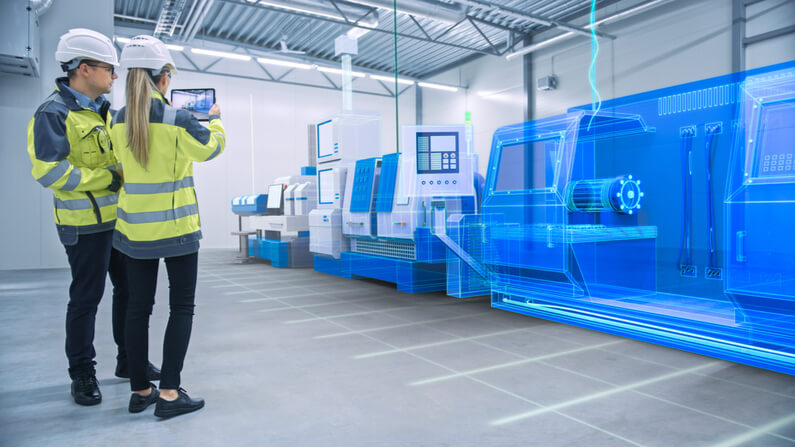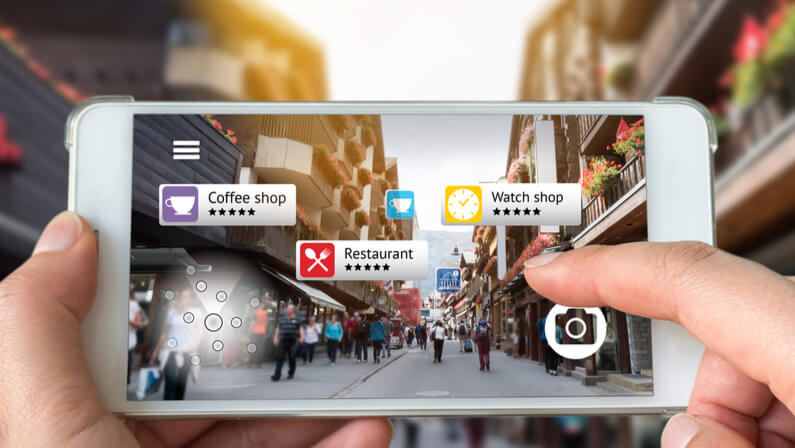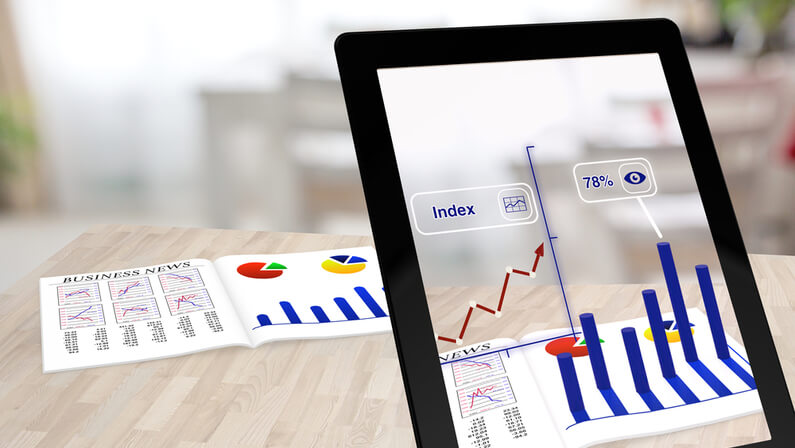Did you know that recent data showed that at least 35% of businesses have adopted augmented reality (AR) technology?
Aside from that fact, what if we told you there was a way to improve your business by using augmented reality? This type of technology has been increasing in popularity in recent years.
Essentially, it’s used to create a digital overlay on top of the real world. When wondering, ‘How is augmented reality used in businesses?’ Think about how it’s used for a variety of purposes including entertainment, education, and business. Augmented reality is often used in several ways to improve businesses and that’s what we’re going to look into.
If you’re interested in learning more about AR business capabilities, keep reading.
Types of AR Technology
AR is a great way to improve businesses. It can enhance operations, functionality, and aesthetics. You can even bring remote team members together to share ideas in a virtual space. What type of augmented reality is used in business?
Let’s take a look at common types of AR systems and how the technology is often used throughout different company types.
Marker-Based AR

One of the most common types of AR used in businesses is marker-based AR. This type of AR uses a physical object as a trigger to display digital content. For example, you may see an ad for a product that has a QR code on it.
When you scan the QR code with your phone, the product’s information is then displayed on your screen. This type of AR is often used for marketing and advertising purposes. Another common use case for marker-based AR is in product manuals.
Markerless AR

As you may have guessed, marker-based AR and markerless AR could go hand-in-hand. The fact is that they are technically different. What they do have in common though is that they are both technically triggers for AR solutions.
Markerless augmented reality simply doesn’t use a marker. Instead of using a marker, the experience is launched by utilizing an AR feature that is within an app or website. This type of AR is perfect for a live event or virtual product placement which is why engineers, prototypers, and other professionals would get a lot out of this application.
Location-Based AR

Another popular type of AR used in businesses is location-based AR. This type of AR uses GPS coordinates to determine the user’s location and then displays relevant digital content.
For example, a business might use this type of AR to create an interactive map that shows the user all of the store’s products.
Or, a museum might use it to create an exhibit that allows users to explore different exhibits by walking around the room. There are endless possibilities for how businesses can use location-based AR.
Holographic AR

One of the newer types of AR is holographic AR. This type of AR uses digital projections to create three-dimensional objects that appear to be in the real world. Holographic AR is often used for entertainment purposes, such as in movies and video games.
However, some businesses are starting to use it for more practical purposes. For example, a doctor might use holographic AR to show a patient what they would look like after surgery.
This type of AR can be very helpful for visualizing things that wouldn’t be possible to see in the real world.
How Is Augmented Reality Used in Businesses?

Now that we have an idea of the different types of AR that are often used and how businesses use them, let’s look at some of the industries as a whole.
In some cases, businesses have been able to completely revolutionize their operations using AR technology.
Here are some key points of how AR has shaped different industries for the better:
Financial Services
The use of augmented reality within the financial services industry is growing rapidly. Banks and other financial institutions are using augmented reality to provide their customers with a more immersive experience.
For example, the Commonwealth Bank of Australia has created an app that allows customers to have a more engaging way to bank and find assistance with property information.
This gives customers a more realistic view of their finances and makes it easier to understand complex information.
High-tech and Fintech
Augmented reality is advantageous in the high-tech and financial technology industries as well. Apple has made comparing products easier than ever by creating an experience that lets customers view product specifications and prices in 3D. This makes it easier for customers to not only compare products but make informed purchasing decisions.
Financial technology companies are also using augmented reality to improve their customers’ experience. For example, Mastercard has developed an app that allows customers to experience and learn about their cardholder benefits in a virtual world. This gives customers a more realistic and engaging view of their benefits.
Augmented reality is also being used in the back-office operations of high-tech and financial technology companies. Adding another to the list, IBM has developed its augmented remote assist application. This technology enhances the user’s overall perception of their surroundings.
IBM’s solution allows the camera of a mobile device to recognize types of hardware that need support. It overlays both 2D and 3D annotations onto the hardware. This is done to provide users with real-time and accurate instructions.
The purpose of this is to help assist field technicians and to guide them through the use of visual instructions that appear directly onto the mobile device.
Public Sector
Augmented reality is also being used in the public sector. The U.S. Department of Defense has started to roll out 5G-powered AR systems to be part of different testing sites. This technology is mainly used for enhanced training purposes although it has multiple application options.
The use of augmented reality is growing rapidly, and its applications are becoming more diverse every day.
Manufacturing
AR is used in manufacturing to improve efficiency and accuracy. For example, Boeing has developed an app that allows engineers to view detailed models of aircraft parts while they are still on the assembly line.
Healthcare
Healthcare providers are beginning to use AR to provide patients with more personalized care. A surgeon can use AR to overlay a patient’s scanned data onto their body to get a better understanding of the surgery they are about to perform.
There are countless other examples of how augmented reality is changing business for the better. Finding the perfect balance of technology and experiences for users to be able to solve complex business problems is exactly what Aequilibrium does. The company implements digital solution strategies for businesses to be able to thrive in seamless ways throughout a digital world.
AR can provide businesses with several benefits including:
- Increased efficiency
- Improved accuracy
- Greater customer engagement
- Reduced costs
- Improved safety
Overall, if you’re considering using AR in your business, be sure to weigh the benefits against the costs. You may be surprised at how much AR can improve your bottom line.
Clear Cut Benefits

When it comes to AR, the potential can be easily customized and scaled to a business’s needs. Think about how well the technology itself helps people connect better. If you are attending a meeting that is taking place in another country, you can use AR to see what the participants look like and what the room looks like.
This will help you feel more connected to the meeting and make it easier for you to participate in it. So, what are the main benefits of using AR in business? Here are a few of many.
Increased Engagement
One of the main benefits of using AR in business is that it can increase engagement with customers or employees. Using our interactive map example from earlier, the map shows all of a business’s products so that it is easier for customers to explore them. This can lead to increased sales and a better customer experience.
Employees can also benefit from using AR in business. Think about it this way, if you have a training program that uses AR, employees can learn and absorb new skills quicker.
Improved Productivity
Another great benefit of using AR in business is that it can improve productivity and efficiency. For example, if you have an app that allows employees to submit time cards or invoices, they will be able to do so in a more streamlined manner. This can save the company time and money.
Greater Access To Information
One of the main benefits of using technology, in general, is that it gives us greater access to information. AR is no exception. With AR, businesses can display a wealth of information to their customers or employees.
This can include anything from product manuals, presentations, or shareable files. Having this information readily available is another benefit that could be helpful for businesses.
Enhanced Customer Experience
Finally, one of the most important benefits of using AR in business is that it can enhance your customer’s experience. If you have an app that allows customers to order food or drinks, your AR implementation could provide a unique experience for them that stands out against your competition.
This can lead to a more positive customer experience overall.
AR Technology and Your Business

If you didn’t know that AR technology could offer so many benefits, now you may be aware of a way that this type of solution can help you. ‘How is augmented reality used in businesses?’ is a question that many business owners ask.
If you’re looking to increase customer engagement and efficiency, look no further than AR technology.
Aequilibrium has the experience and know-how to create remarkable experiences tailored to your business needs.
Ready to get started? Click here and let us show you what we can do.











